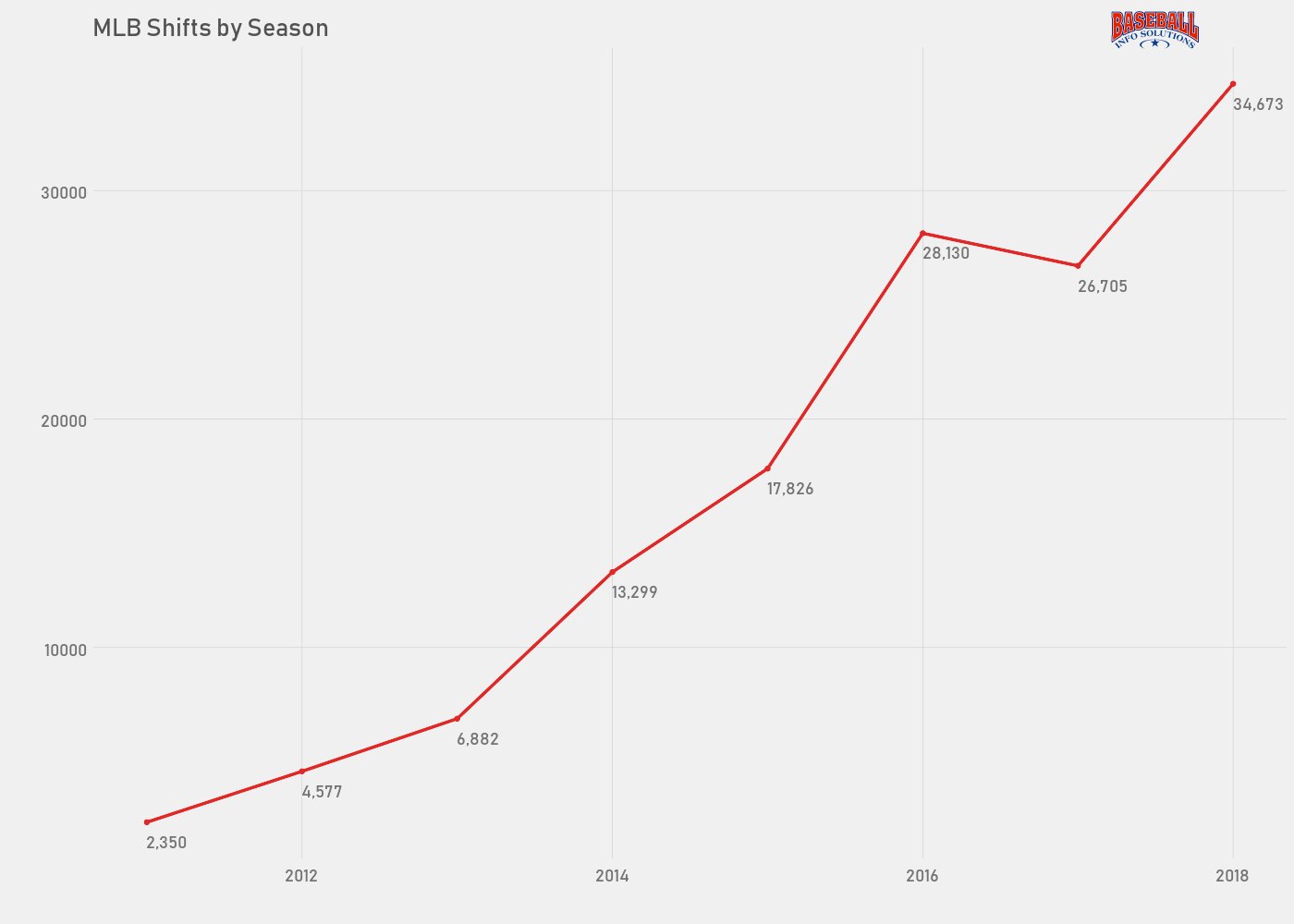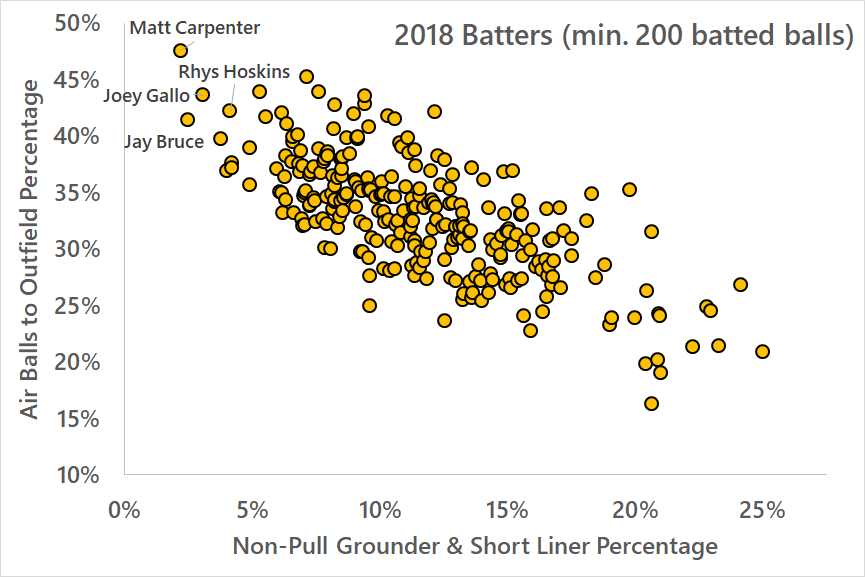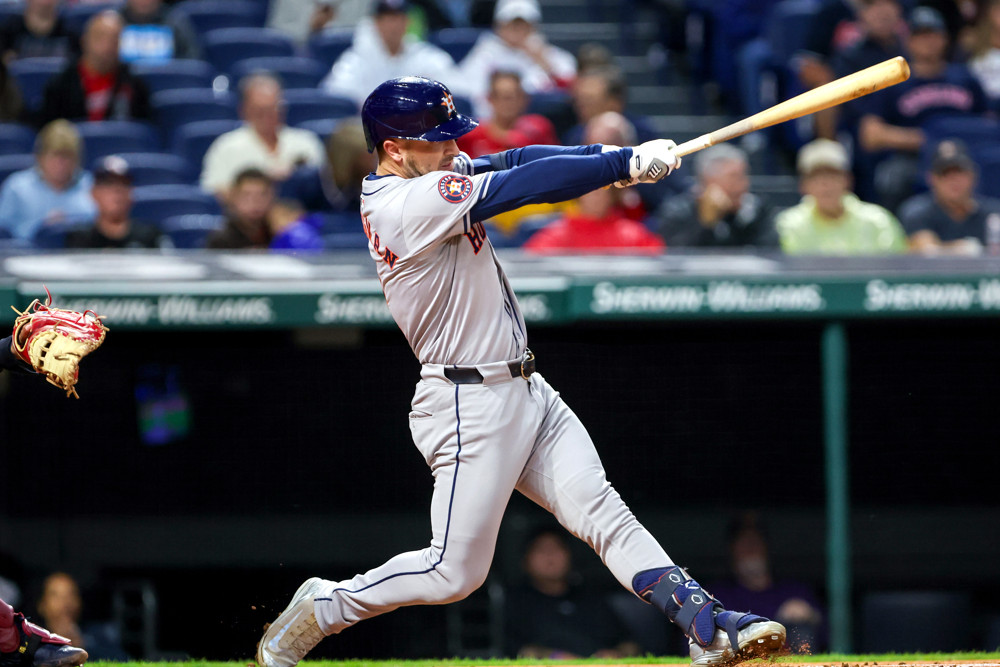When we talk about defensive excellence, all too often we talk about great plays. We’re wowed by the spectacular, the diving, the sliding, and the jumping. Whatever makes for good social media and gets shared a million times over is what we see the most.
And that’s great. It’s fun. Fans love it. Players love it.
But maybe with our inaugural Defensive Player of the Year, Ke’Bryan Hayes, we need to look at this differently. Maybe what defensive excellence is for Hayes is a little different than what it is for someone else.
Hayes’ great plays are high quality but not necessarily high in quantity. Our Video Scouts track Good Fielding Plays. These are largely the highlight-reel plays I mentioned a couple of paragraphs ago, along with (in smaller numbers) things like keeping the ball on the infield to keep a run from scoring.
Here’s one example, and another. They’re really good plays. By our count, Hayes had 14 Good Fielding Plays in 2023. On a per-1,000-inning basis, he wasn’t close to the MLB leaders at third base. He was middle-of-the-pack.
I have a theory here, though it’s a hard one to prove statistically. It’s that Hayes doesn’t have a lot of Good Fielding Plays because that’s not how he does things. As Pirates manager Derek Shelton told me “He makes really, really difficult plays look routine.”
For example, this play doesn’t look that difficult on TV.
But I watched a ballpark All-9 camera view of it (we can’t show it due to MLB rules). It was a tougher play than you think. Hayes reacted quickly to the ball. Some players might have dove for it. He didn’t need to.
“The thing that impresses me most is the consistency,” Shelton said. “He’s just so good.”
That Hayes can make defense look easy makes sense given that he’s basically been preparing to be a major leaguer since he began playing baseball as a kid. In two conversations with him, a few years apart, Hayes brought up how one of the most important things he learned as a kid was how to throw a ball to his first baseman. The first baseman wore a Superman t-shirt, and it was Hayes’ job to throw to the ‘S.’ He picked this up well.
“I remember his mom asking me why I hit ground balls so hard to him,” said Ke’Bryan’s father, former 14-year major leaguer Charlie Hayes. “He was blessed with great hands. I told her that he was better than most, so I needed to challenge him more. Catching and throwing is the easiest thing to do on a baseball field so there’s no reason not to be great at it. He bought into it all.”
There’s another point that’s important to consider when watching how Hayes defends.
What makes Hayes great is not that he makes great plays. It’s that he makes very few mistakes.
In addition to tracking Good Fielding Plays, our Video Scouts also track Defensive Misplays. Those are things that aren’t scored errors but that have a negative consequence.
Bobble a ball such that you get only a force out rather than a double play? That’s a Defensive Misplay.
Slip and fall trying to catch a popup and have the ball drop behind you or in front of you? That’s a Defensive Misplay.
At SIS, we combine those Defensive Misplays with Errors to provide another data point for defensive evaluation.
Let’s compare Hayes’ 2023 Defensive Misplay and Errors per 1,000 innings to five other third basemen considered to be among the best in MLB.
| Player | Team | Misplays & Errors Per 1,000 Innings |
| Ke’Bryan Hayes | Pirates | 12.5 |
| Manny Machado | Padres | 18.5 |
| Ryan McMahon | Rockies | 19.0 |
| Alex Bregman | Astros | 21.9 |
| Nolan Arenado | Cardinals | 21.9 |
| Matt Chapman | Blue Jays | 26.4 |
Hayes crushed all of those guys this season.
The only player to have a better rate at third base than Hayes in 2023 was DJ LeMahieu of the Yankees. Hayes played about 450 more innings at third base than LeMahieu did. Look at this stat for the last 4 seasons and it’s LeMahieu and Hayes as the best, with Hayes having played about 1,700 more innings than LeMahieu has.
This low misplay total is particularly impressive for 2 other reasons.
- Hayes played an average depth of 114 feet from home plate with no one on base in 2023, among the shallowest depths for a third baseman in MLB.
- Hayes plays an uber-aggressive third base. He handles more balls than any other third baseman. Hayes has led all third basemen in range factor per 9 innings in each of the last 2 seasons.
And it’s all done very calmly and with an ease that other players don’t necessarily have.
A high school coach used to tell Hayes to be extraordinary at the ordinary. Hayes lives that saying. To do that he embraced the other side of playing defense.
“The mental side has been the biggest thing for me,” Ke’Bryan Hayes said. “Playing outcomes in my head before they happen. Knowing the runners, knowing who’s pitching, knowing how they hit the ball off that pitcher. I try to break down everything and that way, whatever it does happen, I kind of just let my instincts take over. I just trust myself.”
SIS VP of Baseball Bobby Scales said on our baseball podcast “Ke’Bryan Hayes never panics on any ball.”
All the work Hayes put in pays off and you can see that if you watch him up close every day.
“He has the ability to read hops that no one else has,” said Shelton. “That’s not something you can teach. One of the things that elite third basemen do is have the ability to decide if they’re going to come get the ball or if they’re going to take a drop step to get it. It’s not even something he has to think about. It’s just something that he does.”
Hayes’ role is changing. At age 26, he’s no longer the youngest infielder on the team. He’s now the player the younger infield prospects watch to see how he does things.
“At the end of the day, I’m just trying to go out there and be an example of just doing things the right way,” Hayes said.



